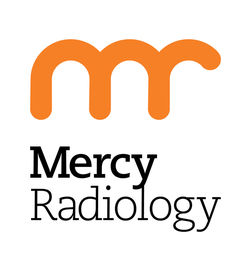Central Auckland, East Auckland, South Auckland, West Auckland, North Auckland > Private Hospitals & Specialists >
Mercy Radiology
Private Service, Radiology, Pregnancy Ultrasound
Today
Mercy Radiology Building, 2 Fred Thomas Drive, Takapuna, Auckland
8:30 AM to 5:00 PM.
Description
Mercy Radiology Group is one of the largest providers of private radiology services in Auckland.
We are a service driven, IANZ (International Accreditation NZ) accredited organisation that is dedicated to providing a full range of high quality diagnostic radiology services. The group has 130 staff including 22 specialist radiologists, who between them provide a comprehensive range of general and sub-specialist radiology skills.
Our mission is to help your doctor solve your medical problems by providing high-quality radiology in a timely effective manner.
Note: Mobile PET-CT is now accepting referrals. For all the latest news and location updates, subscribe to our newsletter. Phone: 0800 001 185 Email: booking@mobileimaging.co.nz
Services Available:
| General Radiology (e.g. x- rays) |
US | Mammo- graphy |
Barium Studies |
Bone Density |
Nuclear Medicine |
MRI | CT | PET- CT |
Steroid Guided Injections |
Biopsy | Fluoro-scopy | Radioligand Therapy | |
|
Mercy |
● |
● |
|
● |
|
● |
● |
|
|||||
| Mercy Hospital - Radiology 2 |
● |
|
● |
● | ● | ||||||||
| Mercy Hospital - PET-CT |
● |
● | |||||||||||
| Botany Rd |
● |
● |
● |
|
● |
● |
● |
● | ● | ||||
| City Med |
● |
● |
|||||||||||
| Pukekohe |
● |
● |
● |
● | ● |
● |
|
|
|
||||
| Rosedale |
● |
● |
● |
● |
● |
|
|
||||||
| Silverdale |
● |
● |
● | ● |
● |
● |
|
|
|||||
| Takapuna |
● |
● |
● |
|
● |
|
|
|
|||||
| Milford |
|
|
● |
● |
|
|
|
|
|||||
| St Lukes |
● |
● |
|||||||||||
| Westgate |
● |
● |
● |
|
● |
|
|
||||||
| Ōrewa | ● | ● | ● | ||||||||||
| Pakuranga | ● | ● | |||||||||||
| Warkworth | ● | ● | |||||||||||
| Mobile PET-CT | ● |
● |
Consultants
-

Dr Pilar Aparisi Gomez
Radiologist
-

Dr Mark Barnett
Radiologist
-

Dr Cynthia Benny
Radiologist
-

Dr David Benson-Cooper
Radiologist
-

Dr Rahul Bera
Radiologist
-

Dr Stefan Brew
Radiologist
-

Dr Supriya Cardoza
Radiologist
-

Dr Trevor Chan
Radiologist
-

Dr Devesh Dixit
Radiologist
-

Dr Rukshan Fernando
Radiologist
-
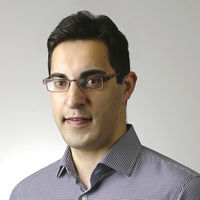
Dr Marcus Ghuman
Radiologist
-
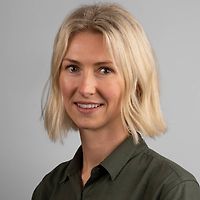
Dr Rohana Gillies
Radiologist
-

Dr Keshnee Govender
Radiologist
-
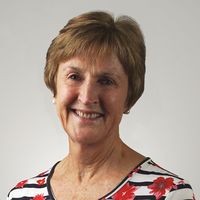
Dr M Anne Harkness
Radiologist
-

Dr Andrew Henderson
Radiologist
-

Dr Jocelyn Homer
Radiologist
-
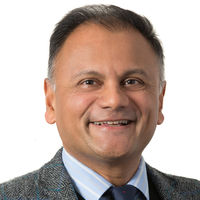
Dr Sunderarajan Jayaraman
Radiologist
-

Dr Puja Kashyap
Radiologist
-

Dr Colette Kennedy
Radiologist
-

Dr Joo Kim
Radiologist
-
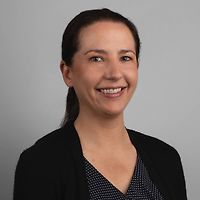
Dr Lara Kimble
Radiologist Fellow
-

Dr Remy Lim
Radiologist
-
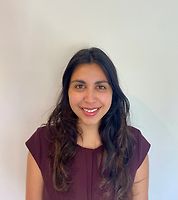
Dr Neda Maani
Radiologist
-

Dr Peter Millener
Radiologist
-

Dr Mark Osborne
Radiologist
-

Dr Hana Pak
Radiologist
-

Dr Hament Pandya
Radiologist
-

Dr Ellen Perry
Radiologist
-

Dr Clinton Pinto
Radiologist
-

Dr Sugania Reddy
Radiologist
-

Dr Jane Reeve
Radiologist
-

Dr John Scotter
Radiologist Fellow
-

Dr Hemanth Subramaniam
Radiologist
-

Dr Claudia Weidekamm
Radiologist
-

Dr Margaret Weston
Radiologist
-

Dr Jeremy Whitlock
Radiologist
-

Dr Ai Wain Yong
Radiologist
-

Dr Sook Yong
Radiologist
-

Dr Lee Young
Radiologist
Referral Expectations
For Patients
Visit our website www.radiology.co.nz to make an appointment or phone us. If you have any questions, our staff will be pleased to help you.
We can give you accurate information regarding cost and examination if you or your doctor email or upload the referral form to us. For some procedures, we will advise you to contact your medical insurance company regarding prior approval or policy cover.
Click here for the Mercy Radiology website.
For Referrers
For your convenience and quick access to reports, please get set-up with our NEW REFERRER PORTAL https://www.radiology.co.nz/referrers/online-referrer-portal.
Fees and Charges Description
Mercy Radiology are a Southern Cross Affiliated provider for a range of services. Please contact us for further details.
Hours
Mercy Radiology Building, 2 Fred Thomas Drive, Takapuna, Auckland
8:30 AM to 5:00 PM.
| Mon – Fri | 8:30 AM – 5:00 PM |
|---|
Hours may vary on Public Holidays
Procedures / Treatments
Quantitative CT bone mineral analysis measures the calcium content of the spine. Osteoporosis, or thinning of the bones due to loss of calcium, is an increasingly common problem in middle aged and mature women and it can lead to crush fractures of the spine or more serious fractures of the hips. There are several techniques available to measure the calcium content of the spine and we choose to use the modern CT method. What to expect? It is a simple and painless procedure. The patient lies on a comfortable bed and special CT scans are taken through the lumbar spine. From these pictures the calcium content of the trabecular or spongy bone in the centre of each vertebra is measured and plotted on a graph. (It is the central trabecular bone which determines bone strength, not the cortical bone around the outside of the vertebral body.) The procedure takes only a few minutes and no injection or special preparation is required. For more information click here
Quantitative CT bone mineral analysis measures the calcium content of the spine. Osteoporosis, or thinning of the bones due to loss of calcium, is an increasingly common problem in middle aged and mature women and it can lead to crush fractures of the spine or more serious fractures of the hips. There are several techniques available to measure the calcium content of the spine and we choose to use the modern CT method. What to expect? It is a simple and painless procedure. The patient lies on a comfortable bed and special CT scans are taken through the lumbar spine. From these pictures the calcium content of the trabecular or spongy bone in the centre of each vertebra is measured and plotted on a graph. (It is the central trabecular bone which determines bone strength, not the cortical bone around the outside of the vertebral body.) The procedure takes only a few minutes and no injection or special preparation is required. For more information click here
Quantitative CT bone mineral analysis measures the calcium content of the spine.
Osteoporosis, or thinning of the bones due to loss of calcium, is an increasingly common problem in middle aged and mature women and it can lead to crush fractures of the spine or more serious fractures of the hips. There are several techniques available to measure the calcium content of the spine and we choose to use the modern CT method.
What to expect?
It is a simple and painless procedure. The patient lies on a comfortable bed and special CT scans are taken through the lumbar spine. From these pictures the calcium content of the trabecular or spongy bone in the centre of each vertebra is measured and plotted on a graph. (It is the central trabecular bone which determines bone strength, not the cortical bone around the outside of the vertebral body.) The procedure takes only a few minutes and no injection or special preparation is required.
For more information click here
Mercy Radiology performs a variety of breast imaging services such as digital screening mammography (2D and 3D) breast ultrasound stereotactic and ultrasound guided biopsy ultrasound guided cyst aspiration wire localisation and breast MRI For more information click here What to expect: Your Mammogram wiht Mercy Radiology - watch video
Mercy Radiology performs a variety of breast imaging services such as digital screening mammography (2D and 3D) breast ultrasound stereotactic and ultrasound guided biopsy ultrasound guided cyst aspiration wire localisation and breast MRI For more information click here What to expect: Your Mammogram wiht Mercy Radiology - watch video
Mercy Radiology performs a variety of breast imaging services such as
- digital screening mammography (2D and 3D)
- breast ultrasound
- stereotactic and ultrasound guided biopsy
- ultrasound guided cyst aspiration
- wire localisation and
- breast MRI
For more information click here
What to expect: Your Mammogram wiht Mercy Radiology - watch video
With CT you can differentiate many more things than with a normal X-ray. A CT image is created by using an X-ray beam, which is sent through the body from different angles, and by using a complicated mathematical process the computer of the CT is able to produce an image. This allows cross-sectional images of the body without cutting it open. The CT is used to view all body structures but especially soft tissue such as body organs (heart, lungs, liver etc.). What to expect? Please come to your appointment dressed in comfortable, casual clothing. For some examinations you will be asked to change into a gown. It may be necessary to remove metallic objects such as jewellery, dentures, hearing aids etc. Your radiographer will position you on the bed. The radiographer will operate the CT scanner from an adjoining room but is in contact with you via an intercom and, when out of the scanning room, will be observing you the whole time through a large window. The scanning couch will move during the scan and you will be asked to remain very still during the scanning process. Some procedures will require Contrast Medium. Contrast medium is a substance that makes the image of the CT or MRI clearer. Contrast medium can be given by mouth, rectally, or by injection into the bloodstream. We will tell you about this when you make your appointment. The scan time will vary depending on the type of examination required, but as a rule it will take around 20-40 minutes. Preparing for your scan As a general rule you should not eat or drink anything three hours before your appointment. However you should continue to take prescribed medications. Diabetic patients will be advised when making their appointment whether or not to delay their medication for the scan. Please bring any previous x-rays. Your results After the examination and before you leave, the radiographer and radiologist will check all the pictures obtained during the scan. The radiologist will review your scans and send your films and report to your doctor. For more information click here
With CT you can differentiate many more things than with a normal X-ray. A CT image is created by using an X-ray beam, which is sent through the body from different angles, and by using a complicated mathematical process the computer of the CT is able to produce an image. This allows cross-sectional images of the body without cutting it open. The CT is used to view all body structures but especially soft tissue such as body organs (heart, lungs, liver etc.). What to expect? Please come to your appointment dressed in comfortable, casual clothing. For some examinations you will be asked to change into a gown. It may be necessary to remove metallic objects such as jewellery, dentures, hearing aids etc. Your radiographer will position you on the bed. The radiographer will operate the CT scanner from an adjoining room but is in contact with you via an intercom and, when out of the scanning room, will be observing you the whole time through a large window. The scanning couch will move during the scan and you will be asked to remain very still during the scanning process. Some procedures will require Contrast Medium. Contrast medium is a substance that makes the image of the CT or MRI clearer. Contrast medium can be given by mouth, rectally, or by injection into the bloodstream. We will tell you about this when you make your appointment. The scan time will vary depending on the type of examination required, but as a rule it will take around 20-40 minutes. Preparing for your scan As a general rule you should not eat or drink anything three hours before your appointment. However you should continue to take prescribed medications. Diabetic patients will be advised when making their appointment whether or not to delay their medication for the scan. Please bring any previous x-rays. Your results After the examination and before you leave, the radiographer and radiologist will check all the pictures obtained during the scan. The radiologist will review your scans and send your films and report to your doctor. For more information click here
For more information click here
Fluoroscopy is an imaging technique that uses low dose X-ray to obtain real-time images. If an X-ray is like a photograph, think of fluoroscopy as a movie (a very short one though), as it produces moving images. There are a number of fluoroscopic procedures performed at Mercy Radiology including: Arthrograms Barium Swallow/Meal Gastrograffin Enema Cystograms and Urethrograms Dacrocystogram Discogram Myelogram Steroid Injections Sialogram For more information click here
Fluoroscopy is an imaging technique that uses low dose X-ray to obtain real-time images. If an X-ray is like a photograph, think of fluoroscopy as a movie (a very short one though), as it produces moving images. There are a number of fluoroscopic procedures performed at Mercy Radiology including: Arthrograms Barium Swallow/Meal Gastrograffin Enema Cystograms and Urethrograms Dacrocystogram Discogram Myelogram Steroid Injections Sialogram For more information click here
Fluoroscopy is an imaging technique that uses low dose X-ray to obtain real-time images. If an X-ray is like a photograph, think of fluoroscopy as a movie (a very short one though), as it produces moving images.
There are a number of fluoroscopic procedures performed at Mercy Radiology including:
- Arthrograms
- Barium Swallow/Meal
- Gastrograffin Enema
- Cystograms and Urethrograms
- Dacrocystogram
- Discogram
- Myelogram
- Steroid Injections
- Sialogram
For more information click here
MRI produces very detailed cross sectional pictures of the body without using x-rays or ultrasound. It uses two naturally occurring forces, magnetic fields and radio waves, to generate images. When the body is placed in a large magnet, some of the atoms which make up the body behave like small magnets. A radiowave directed at these atoms causes them to send out a radiowave of their own. These returning signals are detected by a specialised antenna and a computer converts the signals into a picture. These pictures are recorded on a film for the radiologist to interpret. Unlike ordinary x-rays the pictures are cross sections of the body, a bit like CT scans, except that MRI cross sections can be obtained from any angle. MRI is extremely good at showing fine abnormalities in the brain particularly small tumours and multiple sclerosis which do not show at all well on CT scanning. It also produces better pictures of the spine than CT scanning and for this reason is largely replacing CT scanning for investigating the head and spine. MRI is also superb for examining joints - especially the knee and shoulder, and is rapidly replacing exploratory surgery on these joints. Pelvic diseases such as cancer in the ovaries, uterus and prostate are often "staged" by MRI. ("Staging" means checking for spread to other areas). It is also the best test we have to find endometriosis. Preparation: No special preparation is needed for MRI examination. However any metal in or on the body interferes with the MRI signals. Before the examination you will be asked whether you have metallic implants, electrical implants or whether you may have any metallic fragments like shrapnel elsewhere in the body. As clothing may contain metal, you will be asked to wear a hospital gown. Eyeshadow, glasses, jewellery, watches and hair pins should also be removed as these may contain metal. Credit cards are erased by the magnetic fields, so they should be left outside the scanner room. What to expect? To perform a scan the patient lies on a table and is carried into a large circular magnet. The procedure is painless and there is nothing to do but lie still, breath quietly and relax. Keeping still is very important to prevent blurring of the images. The machinery is quite noisy and patients often hear thumps and bangs while it is working. There is an intercom built into the machine so you will be able to talk to, and hear from, the radiographer during the procedure. The examination usually takes between 30 and 90 minutes. Occasionally a small injection is given to better outline parts of the body. For more information click here
MRI produces very detailed cross sectional pictures of the body without using x-rays or ultrasound. It uses two naturally occurring forces, magnetic fields and radio waves, to generate images. When the body is placed in a large magnet, some of the atoms which make up the body behave like small magnets. A radiowave directed at these atoms causes them to send out a radiowave of their own. These returning signals are detected by a specialised antenna and a computer converts the signals into a picture. These pictures are recorded on a film for the radiologist to interpret. Unlike ordinary x-rays the pictures are cross sections of the body, a bit like CT scans, except that MRI cross sections can be obtained from any angle. MRI is extremely good at showing fine abnormalities in the brain particularly small tumours and multiple sclerosis which do not show at all well on CT scanning. It also produces better pictures of the spine than CT scanning and for this reason is largely replacing CT scanning for investigating the head and spine. MRI is also superb for examining joints - especially the knee and shoulder, and is rapidly replacing exploratory surgery on these joints. Pelvic diseases such as cancer in the ovaries, uterus and prostate are often "staged" by MRI. ("Staging" means checking for spread to other areas). It is also the best test we have to find endometriosis. Preparation: No special preparation is needed for MRI examination. However any metal in or on the body interferes with the MRI signals. Before the examination you will be asked whether you have metallic implants, electrical implants or whether you may have any metallic fragments like shrapnel elsewhere in the body. As clothing may contain metal, you will be asked to wear a hospital gown. Eyeshadow, glasses, jewellery, watches and hair pins should also be removed as these may contain metal. Credit cards are erased by the magnetic fields, so they should be left outside the scanner room. What to expect? To perform a scan the patient lies on a table and is carried into a large circular magnet. The procedure is painless and there is nothing to do but lie still, breath quietly and relax. Keeping still is very important to prevent blurring of the images. The machinery is quite noisy and patients often hear thumps and bangs while it is working. There is an intercom built into the machine so you will be able to talk to, and hear from, the radiographer during the procedure. The examination usually takes between 30 and 90 minutes. Occasionally a small injection is given to better outline parts of the body. For more information click here
MRI produces very detailed cross sectional pictures of the body without using x-rays or ultrasound. It uses two naturally occurring forces, magnetic fields and radio waves, to generate images. When the body is placed in a large magnet, some of the atoms which make up the body behave like small magnets. A radiowave directed at these atoms causes them to send out a radiowave of their own. These returning signals are detected by a specialised antenna and a computer converts the signals into a picture. These pictures are recorded on a film for the radiologist to interpret.
Unlike ordinary x-rays the pictures are cross sections of the body, a bit like CT scans, except that MRI cross sections can be obtained from any angle. MRI is extremely good at showing fine abnormalities in the brain particularly small tumours and multiple sclerosis which do not show at all well on CT scanning. It also produces better pictures of the spine than CT scanning and for this reason is largely replacing CT scanning for investigating the head and spine.
MRI is also superb for examining joints - especially the knee and shoulder, and is rapidly replacing exploratory surgery on these joints. Pelvic diseases such as cancer in the ovaries, uterus and prostate are often "staged" by MRI. ("Staging" means checking for spread to other areas). It is also the best test we have to find endometriosis.
Preparation:
No special preparation is needed for MRI examination. However any metal in or on the body interferes with the MRI signals. Before the examination you will be asked whether you have metallic implants, electrical implants or whether you may have any metallic fragments like shrapnel elsewhere in the body. As clothing may contain metal, you will be asked to wear a hospital gown. Eyeshadow, glasses, jewellery, watches and hair pins should also be removed as these may contain metal. Credit cards are erased by the magnetic fields, so they should be left outside the scanner room.
What to expect?
To perform a scan the patient lies on a table and is carried into a large circular magnet. The procedure is painless and there is nothing to do but lie still, breath quietly and relax. Keeping still is very important to prevent blurring of the images. The machinery is quite noisy and patients often hear thumps and bangs while it is working. There is an intercom built into the machine so you will be able to talk to, and hear from, the radiographer during the procedure. The examination usually takes between 30 and 90 minutes. Occasionally a small injection is given to better outline parts of the body.
For more information click here
Mammography is the best test there is for evaluating breast problems. A mammogram is a specialised x-ray of the breast taken with a dedicated machine. A digital mammogram system is now used so that only a very low dose of x-rays is needed. Mammography is used in two ways. One is to investigate women who have breast symptoms - this is called diagnostic mammography. The other technique is screening mammography, which involves taking regular mammograms of women with no breast symptoms to detect very early breast cancer, long before lumps are big enough to feel. Research shows that regular screening mammography can reduce the death rate of breast cancer by at least 35%. Women over fifty years old should have a mammogram every two years (or every year if a close relative had breast cancer) and women aged forty to fifty should have annual mammograms. About 93% of cancers can be detected by mammography, so it is a very good test, but it is not perfect and annual breast examination by your doctor is also important. Does it Hurt? The vast majority of women report that mammography is mildly uncomfortable, but not painful. Women who have tender breasts premenstrually are advised to delay mammography until after the period finishes. If you have had a painful mammogram in the past, please tell us - with improved techniques and our experienced staff, painful mammograms are now very uncommon at Mercy Breast Clinic. What to Expect Taking a high quality mammogram is a very specialised task and our female technologists are all well trained. Two x-rays are taken of each breast while the breast is held firm by a compression paddle. The compression prevents blurring from movement in the tissue and leads to a big reduction in the x-ray dose. It also helps to spread the breast tissue out, making the mammogram easier to read. At Mercy Breast Clinic we believe it is important that you are given your results as soon as possible, so there is always a radiologist present to check the films and discuss the results with you immediately. After the mammograms are checked it is sometimes necessary to take extra mammograms or to check the breast with ultrasound. Occasionally, after consultation with you and your doctor or breast specialist, it is necessary to perform additional investigations. This can include fine needle aspiration biopsy, where a fine needle is placed in a breast abnormality to obtain some of the cells for testing. A core biopsy can also obtain tissue for diagnosis.
Mammography is the best test there is for evaluating breast problems. A mammogram is a specialised x-ray of the breast taken with a dedicated machine. A digital mammogram system is now used so that only a very low dose of x-rays is needed. Mammography is used in two ways. One is to investigate women who have breast symptoms - this is called diagnostic mammography. The other technique is screening mammography, which involves taking regular mammograms of women with no breast symptoms to detect very early breast cancer, long before lumps are big enough to feel. Research shows that regular screening mammography can reduce the death rate of breast cancer by at least 35%. Women over fifty years old should have a mammogram every two years (or every year if a close relative had breast cancer) and women aged forty to fifty should have annual mammograms. About 93% of cancers can be detected by mammography, so it is a very good test, but it is not perfect and annual breast examination by your doctor is also important. Does it Hurt? The vast majority of women report that mammography is mildly uncomfortable, but not painful. Women who have tender breasts premenstrually are advised to delay mammography until after the period finishes. If you have had a painful mammogram in the past, please tell us - with improved techniques and our experienced staff, painful mammograms are now very uncommon at Mercy Breast Clinic. What to Expect Taking a high quality mammogram is a very specialised task and our female technologists are all well trained. Two x-rays are taken of each breast while the breast is held firm by a compression paddle. The compression prevents blurring from movement in the tissue and leads to a big reduction in the x-ray dose. It also helps to spread the breast tissue out, making the mammogram easier to read. At Mercy Breast Clinic we believe it is important that you are given your results as soon as possible, so there is always a radiologist present to check the films and discuss the results with you immediately. After the mammograms are checked it is sometimes necessary to take extra mammograms or to check the breast with ultrasound. Occasionally, after consultation with you and your doctor or breast specialist, it is necessary to perform additional investigations. This can include fine needle aspiration biopsy, where a fine needle is placed in a breast abnormality to obtain some of the cells for testing. A core biopsy can also obtain tissue for diagnosis.
Mammography is the best test there is for evaluating breast problems. A mammogram is a specialised x-ray of the breast taken with a dedicated machine. A digital mammogram system is now used so that only a very low dose of x-rays is needed.
Mammography is used in two ways. One is to investigate women who have breast symptoms - this is called diagnostic mammography. The other technique is screening mammography, which involves taking regular mammograms of women with no breast symptoms to detect very early breast cancer, long before lumps are big enough to feel. Research shows that regular screening mammography can reduce the death rate of breast cancer by at least 35%. Women over fifty years old should have a mammogram every two years (or every year if a close relative had breast cancer) and women aged forty to fifty should have annual mammograms.
About 93% of cancers can be detected by mammography, so it is a very good test, but it is not perfect and annual breast examination by your doctor is also important.
Does it Hurt?
The vast majority of women report that mammography is mildly uncomfortable, but not painful. Women who have tender breasts premenstrually are advised to delay mammography until after the period finishes. If you have had a painful mammogram in the past, please tell us - with improved techniques and our experienced staff, painful mammograms are now very uncommon at Mercy Breast Clinic.
What to Expect
Taking a high quality mammogram is a very specialised task and our female technologists are all well trained. Two x-rays are taken of each breast while the breast is held firm by a compression paddle. The compression prevents blurring from movement in the tissue and leads to a big reduction in the x-ray dose. It also helps to spread the breast tissue out, making the mammogram easier to read. At Mercy Breast Clinic we believe it is important that you are given your results as soon as possible, so there is always a radiologist present to check the films and discuss the results with you immediately. After the mammograms are checked it is sometimes necessary to take extra mammograms or to check the breast with ultrasound.
Occasionally, after consultation with you and your doctor or breast specialist, it is necessary to perform additional investigations. This can include fine needle aspiration biopsy, where a fine needle is placed in a breast abnormality to obtain some of the cells for testing. A core biopsy can also obtain tissue for diagnosis.
Mercy Radiology’s musculoskeletal service provides diagnostic and interventional services including X-ray, ultrasound, CT, MRI, fluoroscopy, SPECT-CT and sodium fluoride PET-CT. Complementing our imaging service, we also perform a full range of minimally invasive, therapeutic injections into many body regions, to treat a range of joint and soft tissue disorders. For more information click here
Mercy Radiology’s musculoskeletal service provides diagnostic and interventional services including X-ray, ultrasound, CT, MRI, fluoroscopy, SPECT-CT and sodium fluoride PET-CT. Complementing our imaging service, we also perform a full range of minimally invasive, therapeutic injections into many body regions, to treat a range of joint and soft tissue disorders. For more information click here
Mercy Radiology’s musculoskeletal service provides diagnostic and interventional services including X-ray, ultrasound, CT, MRI, fluoroscopy, SPECT-CT and sodium fluoride PET-CT.
Complementing our imaging service, we also perform a full range of minimally invasive, therapeutic injections into many body regions, to treat a range of joint and soft tissue disorders.
For more information click here
This is a specialised scanning method using very small amounts of low-level radioactive isotopes injected into the bloodstream. Once administered these radioactive tracers can localise to specific organs where the scanner, called a gamma camera, is used to measure the radiation levels given off from the isotopes. The technique often demonstrates diseases before other conventional scans such as X-rays and ultrasound. For more information click here
This is a specialised scanning method using very small amounts of low-level radioactive isotopes injected into the bloodstream. Once administered these radioactive tracers can localise to specific organs where the scanner, called a gamma camera, is used to measure the radiation levels given off from the isotopes. The technique often demonstrates diseases before other conventional scans such as X-rays and ultrasound. For more information click here
For more information click here
Mercy PET-CT is a new initiative undertaken by Sonic Healthcare and Integrated Hospitals to provide the latest in diagnostic technology for cancer patients in the Auckland region. Located at the MercyAscot Hospital in Mountain Rd, Epsom, Mercy PET-CT has installed a Siemens Biograph mCT scanner which provides PET (Positron Emission Tomography) scanning along with 64-slice fully diagnostic CT (Computed Tomography) scanning. These images are fused together to give a comprehensive, accurate assessment of the tissue and structures of the body. For more information click here
Mercy PET-CT is a new initiative undertaken by Sonic Healthcare and Integrated Hospitals to provide the latest in diagnostic technology for cancer patients in the Auckland region. Located at the MercyAscot Hospital in Mountain Rd, Epsom, Mercy PET-CT has installed a Siemens Biograph mCT scanner which provides PET (Positron Emission Tomography) scanning along with 64-slice fully diagnostic CT (Computed Tomography) scanning. These images are fused together to give a comprehensive, accurate assessment of the tissue and structures of the body. For more information click here
Mercy PET-CT is a new initiative undertaken by Sonic Healthcare and Integrated Hospitals to provide the latest in diagnostic technology for cancer patients in the Auckland region.
Located at the MercyAscot Hospital in Mountain Rd, Epsom, Mercy PET-CT has installed a Siemens Biograph mCT scanner which provides PET (Positron Emission Tomography) scanning along with 64-slice fully diagnostic CT (Computed Tomography) scanning. These images are fused together to give a comprehensive, accurate assessment of the tissue and structures of the body.
For more information click here
Lutetium-177 PSMA (Prostate specific membrane antigen) treatment is a form of radionuclide therapy that aims to destroy prostate cancer cells that have spread into parts of the body, including lymph nodes and bones. The destruction of the prostate cancer cells may prolong life expectancy and also potentially alleviate any symptoms such as bone pain frequently associated with deposits of cancer in the skeleton. For more information click here
Lutetium-177 PSMA (Prostate specific membrane antigen) treatment is a form of radionuclide therapy that aims to destroy prostate cancer cells that have spread into parts of the body, including lymph nodes and bones. The destruction of the prostate cancer cells may prolong life expectancy and also potentially alleviate any symptoms such as bone pain frequently associated with deposits of cancer in the skeleton. For more information click here
Lutetium-177 PSMA (Prostate specific membrane antigen) treatment is a form of radionuclide therapy that aims to destroy prostate cancer cells that have spread into parts of the body, including lymph nodes and bones.
The destruction of the prostate cancer cells may prolong life expectancy and also potentially alleviate any symptoms such as bone pain frequently associated with deposits of cancer in the skeleton.
For more information click here
In ultrasound, a beam of sound at a very high frequency (that cannot be heard) is sent into the body from a small vibrating crystal in a hand-held scanner head. When the beam meets a surface between tissues of different density, echoes of the sound beam are sent back into the scanner head. The time between sending the sound and receiving the echo back is fed into a computer, which in turn creates an image that is projected on a television screen. Ultrasound is a very safe type of imaging; this is why it is so widely used during pregnancy. Preparing for your ultrasound For pregnancy examinations within the first three months, and for pelvic and kidney scans, it is important that you have a full bladder. The best way to achieve a full bladder is to drink 1 litre of fluid one and a half hours before your appointment. For examinations of the gall bladder and other types of abdominal examinations, it is important that you do not eat anything for six hours beforehand. If you are having both an abdominal and a pelvic examination do not eat for six hours and drink 1 litre of fluid one and a half hours before the examination. What to expect? After you lie down on the Ultrasound bed, the radiologist or sonographer will spread a waterbased jelly on your skin over the area to be examined. The ultrasound probe is then placed on the jelly, which is a sound conductor, to obtain the pictures. You will be completely unaware of the sound waves produced by the probe. There is no discomfort during the examination, apart from the sensation of a full bladder if you are having a pelvic examination. The examination usually takes 15 -30 minutes. For pregnancy examinations, you are most welcome to bring your partner or other close members of the family. Your results If your problem is urgent, your doctor may ask you to return to the surgery after the examination is finished. First you need to wait 15-30 minutes while we process the scanning pictures and the radiologist makes a diagnosis. You will then be able to take both the pictures and a report from the radiologist back to your own doctor. If your problem is not urgent, your doctor will receive the pictures and the radiologist’s report usually by the following day. For more information click here
In ultrasound, a beam of sound at a very high frequency (that cannot be heard) is sent into the body from a small vibrating crystal in a hand-held scanner head. When the beam meets a surface between tissues of different density, echoes of the sound beam are sent back into the scanner head. The time between sending the sound and receiving the echo back is fed into a computer, which in turn creates an image that is projected on a television screen. Ultrasound is a very safe type of imaging; this is why it is so widely used during pregnancy. Preparing for your ultrasound For pregnancy examinations within the first three months, and for pelvic and kidney scans, it is important that you have a full bladder. The best way to achieve a full bladder is to drink 1 litre of fluid one and a half hours before your appointment. For examinations of the gall bladder and other types of abdominal examinations, it is important that you do not eat anything for six hours beforehand. If you are having both an abdominal and a pelvic examination do not eat for six hours and drink 1 litre of fluid one and a half hours before the examination. What to expect? After you lie down on the Ultrasound bed, the radiologist or sonographer will spread a waterbased jelly on your skin over the area to be examined. The ultrasound probe is then placed on the jelly, which is a sound conductor, to obtain the pictures. You will be completely unaware of the sound waves produced by the probe. There is no discomfort during the examination, apart from the sensation of a full bladder if you are having a pelvic examination. The examination usually takes 15 -30 minutes. For pregnancy examinations, you are most welcome to bring your partner or other close members of the family. Your results If your problem is urgent, your doctor may ask you to return to the surgery after the examination is finished. First you need to wait 15-30 minutes while we process the scanning pictures and the radiologist makes a diagnosis. You will then be able to take both the pictures and a report from the radiologist back to your own doctor. If your problem is not urgent, your doctor will receive the pictures and the radiologist’s report usually by the following day. For more information click here
For more information click here
An X-ray is a high frequency, high energy wave form. It cannot be seen with the naked eye, but can be picked up on photographic film. Although you may think of an X-ray as a picture of bones, a trained observer can also see air spaces, like the lungs (which look black) and fluid (which looks white, but not as white as bones). What to expect? You will have all metal objects removed from your body. You will be asked to remain still in a specific position and hold your breath on command. There are staff present, but they will not necessarily remain in the room, but will speak with you via an intercom system and will be viewing the procedure constantly through a windowed control room. The examination time will vary depending on the type of procedure required, but as a rule it will take around 30 minutes. For more information click here
An X-ray is a high frequency, high energy wave form. It cannot be seen with the naked eye, but can be picked up on photographic film. Although you may think of an X-ray as a picture of bones, a trained observer can also see air spaces, like the lungs (which look black) and fluid (which looks white, but not as white as bones). What to expect? You will have all metal objects removed from your body. You will be asked to remain still in a specific position and hold your breath on command. There are staff present, but they will not necessarily remain in the room, but will speak with you via an intercom system and will be viewing the procedure constantly through a windowed control room. The examination time will vary depending on the type of procedure required, but as a rule it will take around 30 minutes. For more information click here
For more information click here
Online Booking URL
Public Transport
The Auckland Transport Journey Planner will help you to plan your journey.
Parking
Free off street patient parking is provided at our clinics.
For Mercy Hospital parking:
- Radiology 1: Mercy Hospital Car Park. Entrance to Radiology 1 from carpark Level 1 through main hospital entrance.
- Radiology 2: Parking available along front of complex and in Mercy Hospital Car Park. Entrance to Radiology 2 at front of complex.
Pharmacy
Website
Contact Details
8:30 AM to 5:00 PM.
-
Phone
0800497297
Email
Website
2 Fred Thomas Drive
Takapuna
Auckland
Auckland 0622
Street Address
2 Fred Thomas Drive
Takapuna
Auckland
Auckland 0622
Postal Address
PO Box 9056
Newmarket
Auckland 1149
Quay West Building, 8 Albert Street, Auckland Central, Auckland
Central Auckland
8:30 AM to 5:00 PM.
-
Phone
0800497297
Email
Website
Mercy Hospital, 98 Mountain Road, Epsom, Auckland
Central Auckland
8:00 AM to 5:00 PM.
-
Phone
0800497297
Email
Website
52 St Lukes Road, Mount Albert, Auckland
Central Auckland
8:30 AM to 6:30 PM.
-
Phone
0800497297
Email
Website
Franklin Hospital, 12 Glasgow Road, Pukekohe, Auckland
South Auckland
8:30 AM to 5:00 PM.
-
Phone
0800497297
Email
Website
Eastcare, 260 Botany Road, Golflands, Auckland
East Auckland
8:30 AM to 9:00 PM.
-
Phone
0800497297
Email
Website
11-13 Cortina Place, Pakuranga, Auckland
East Auckland
8:30 AM to 5:00 PM.
-
Phone
0800497297
Email
Website
129 Shakespeare Road, Milford, Auckland
North Auckland
8:30 AM to 5:00 PM.
-
Phone
0800497297
Email
Website
Northcare, 5 Home Place, Rosedale, Auckland
North Auckland
8:30 AM to 5:00 PM.
-
Phone
0800497297
Email
Website
Silverdale Medical Centre, 7 Polarity Rise, Silverdale, Auckland
North Auckland
8:30 AM to 7:00 PM.
-
Phone
0800497297
Email
Website
Westgate Shopping Centre, Cnr Hobsonville Road and SH16, Massey, Auckland
West Auckland
8:30 AM to 8:00 PM.
-
Phone
0800497297
Email
Website
16 Moana Avenue, Ōrewa
North Auckland
8:30 AM to 4:30 PM.
-
Phone
0800497297
Email
Website
4 Warkworth Street, Warkworth
North Auckland
8:30 AM to 5:00 PM.
-
Phone
09 425 7282
Email
Website
Was this page helpful?
This page was last updated at 4:07PM on January 28, 2025. This information is reviewed and edited by Mercy Radiology.

